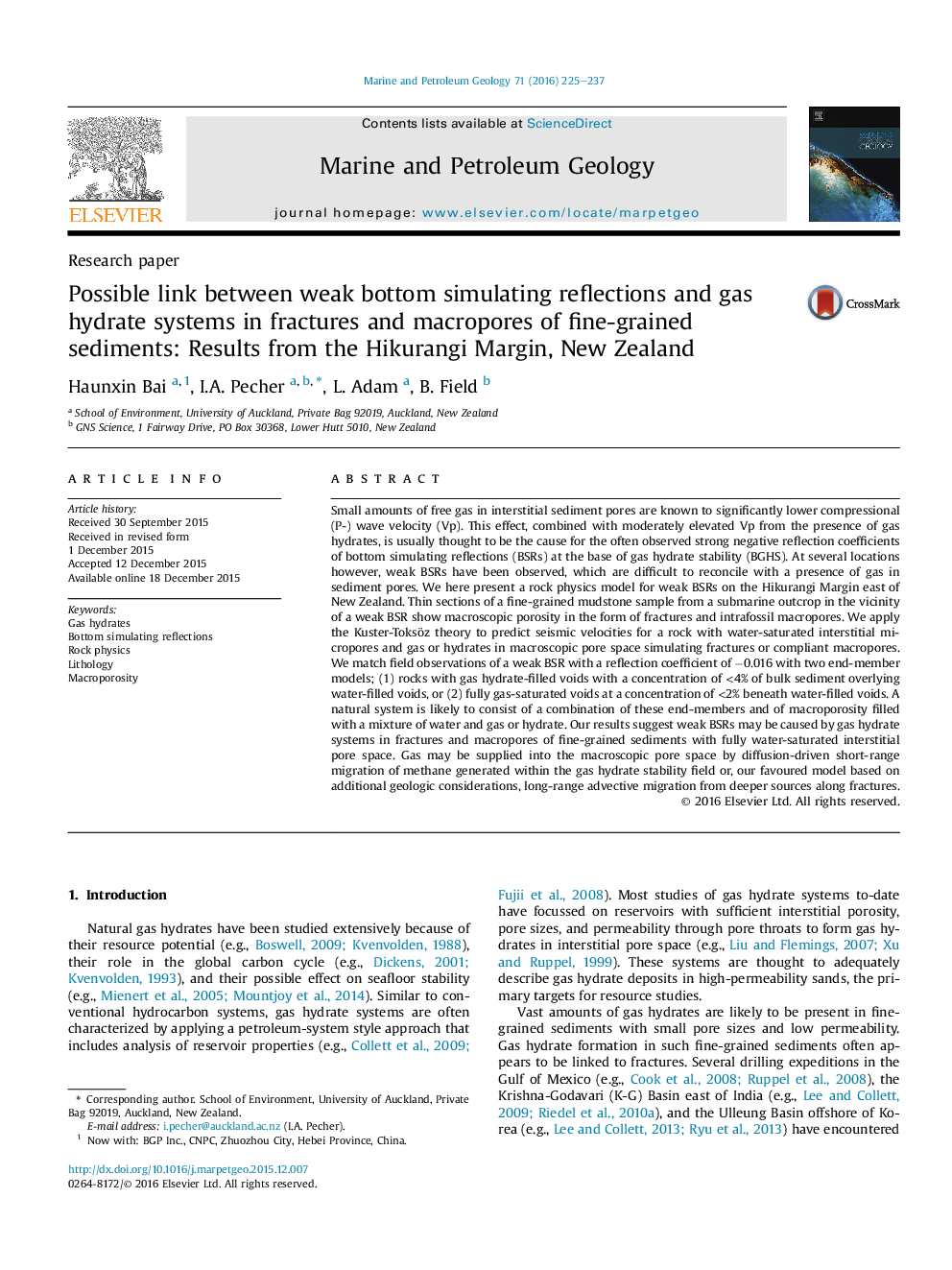| کد مقاله | کد نشریه | سال انتشار | مقاله انگلیسی | نسخه تمام متن |
|---|---|---|---|---|
| 4695426 | 1637156 | 2016 | 13 صفحه PDF | دانلود رایگان |

• Weak BSRs off New Zealand may indicate gas and hydrates in fractures or macropores.
• The interstitial pore space may be fully water saturated.
• We have developed a rock physics model for this type of gas and hydrate distribution.
• Such a gas and hydrate distribution may occur elsewhere in fine-grained lithology.
• High-amplitude patches along weak BSRs may mark lithology with larger pore sizes.
Small amounts of free gas in interstitial sediment pores are known to significantly lower compressional (P-) wave velocity (Vp). This effect, combined with moderately elevated Vp from the presence of gas hydrates, is usually thought to be the cause for the often observed strong negative reflection coefficients of bottom simulating reflections (BSRs) at the base of gas hydrate stability (BGHS). At several locations however, weak BSRs have been observed, which are difficult to reconcile with a presence of gas in sediment pores. We here present a rock physics model for weak BSRs on the Hikurangi Margin east of New Zealand. Thin sections of a fine-grained mudstone sample from a submarine outcrop in the vicinity of a weak BSR show macroscopic porosity in the form of fractures and intrafossil macropores. We apply the Kuster-Toksöz theory to predict seismic velocities for a rock with water-saturated interstitial micropores and gas or hydrates in macroscopic pore space simulating fractures or compliant macropores. We match field observations of a weak BSR with a reflection coefficient of −0.016 with two end-member models; (1) rocks with gas hydrate-filled voids with a concentration of <4% of bulk sediment overlying water-filled voids, or (2) fully gas-saturated voids at a concentration of <2% beneath water-filled voids. A natural system is likely to consist of a combination of these end-members and of macroporosity filled with a mixture of water and gas or hydrate. Our results suggest weak BSRs may be caused by gas hydrate systems in fractures and macropores of fine-grained sediments with fully water-saturated interstitial pore space. Gas may be supplied into the macroscopic pore space by diffusion-driven short-range migration of methane generated within the gas hydrate stability field or, our favoured model based on additional geologic considerations, long-range advective migration from deeper sources along fractures.
Journal: Marine and Petroleum Geology - Volume 71, March 2016, Pages 225–237